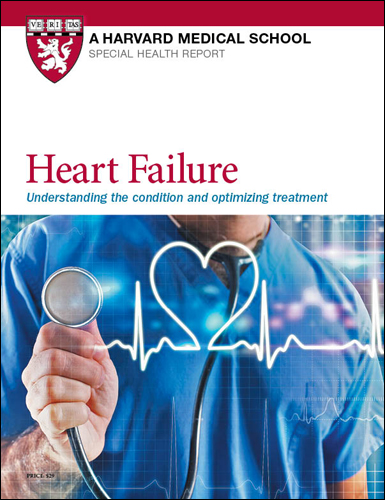The heart-related hazards of air pollution
How does this invisible threat affect your cardiovascular system — and what can you do about it?

Unless you happen to catch a whiff of diesel exhaust from a bus or truck, chances are you don't think about air pollution very often. But pollution is an often overlooked yet important contributor to cardiovascular disease, according to a review published Nov. 11, 2021, in The New England Journal of Medicine (NEJM).
Although the air we breathe is much cleaner today than it was 50 years ago, it's still contaminated by largely odorless, invisible gases and tiny particles generated by burning fossil fuels. Coalfired power plants, steel mills, and vehicle tailpipes are the main contributors. Smoke from wildfires — especially massive fires like those that have ravaged Western forests in recent years — also add to the burden.
Most people don't appreciate the health consequences of poor air quality, says Dr. Murray Mittleman, professor of epidemiology at the Harvard T.H. Chan School of Public Health. "Even in relatively clean cities that comply with EPA air quality standards, relatively low levels of air pollution appear to increase the risk of heart attack and stroke," he says.
Tiny particles, big problems
Of particular concern are particles less than 2.5 microns in diameter, known as PM2.5. They're so minuscule they aren't trapped by the filters in the nose and upper airway that serve as the body's natural defenses against airborne contaminants. The particles travel deep down into the lungs, where they irritate receptors and trigger nerves involved in regulating your heart rate, breathing, and other vital functions. This phenomenon likely explains why even short-term exposure to high levels of air pollution can raise the risk of heart rhythm disorders such as atrial fibrillation, says Dr. Mittleman.
But the irritation caused by PM2.5 and other molecules in air pollution can also spur inflammation—the outpouring of immune system cells, as well as other substances that accelerate atherosclerosis (fatty plaque inside the arteries). Tiny cell fragments in the blood called platelets also become "stickier" and more prone to clotting. Together, these changes make heart attacks and strokes more likely.
Research shows that these risks appear to rise in tandem with increases in PM2.5 levels, both in the short term (hours to days) and over the long term (one to five years), according to the NEJM article. Incremental rises in PM2.5 levels are also linked to a higher risk of being hospitalized or dying from heart failure.
Climate change contributions
PM2.5 and other components of air pollution, including ground-level ozone, play a role in climate change. Climate change, in turn, can worsen the damaging health effects caused by air pollution via many interconnected ways. High temperatures promote the creation of ground-level ozone and raise the risk of wildfires and dust storms, which create more PM2.5. Sweltering temperatures further boost electricity demand (and in turn, more fossil fuel combustion). Finally, temperature extremes may make heart attacks and strokes more deadly.
The recent push to shift toward cleaner forms of energy to help combat climate change should have a favorable effect on air quality, says Dr. Mittleman. To lessen your personal risk and contributions related to pollution, see "Curbing pollution's harms."
Curbing pollution's harmsTwo strategies are useful for people who have heart disease or are at risk for it:
In addition, everyone — regardless of heart health — should work on cutting pollution production. Walk, ride a bicycle, carpool, or use public transportation. Consolidate driving trips whenever possible. Buy a hybrid or electric car. Choose renewable energy (such as solar or wind power) from your local electricity supplier, if available. Conserve energy by purchasing energy-efficient appliances, and turn off lights, computers, televisions, and other electrical devices when you're not using them. |
Image: © acilo/Getty Images
About the Author

Julie Corliss, Executive Editor, Harvard Heart Letter
Disclaimer:
As a service to our readers, Harvard Health Publishing provides access to our library of archived content. Please note the date of last review or update on all articles.
No content on this site, regardless of date, should ever be used as a substitute for direct medical advice from your doctor or other qualified clinician.
















